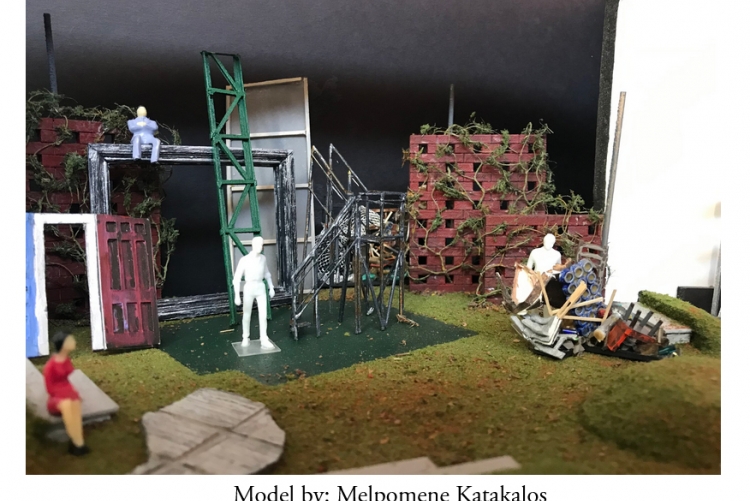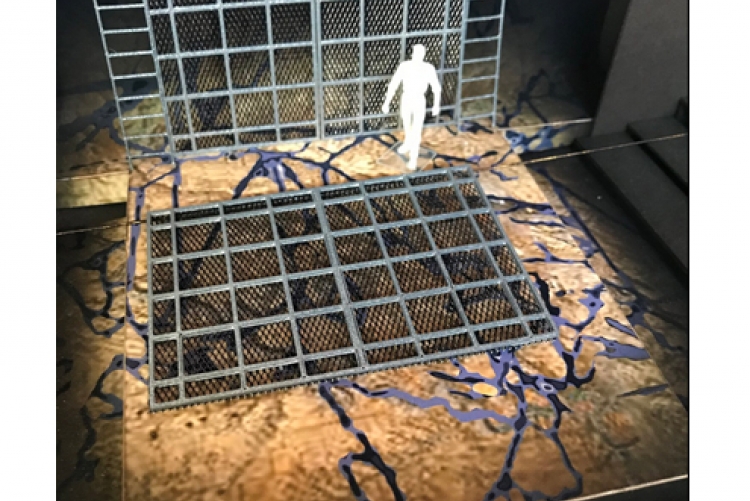In Prompt Journal, Issue 1: Ruins, Am I (Is He) Wearing Pants? is a short play inspired by my featured scenic model. To see the original publication, click HERE.
From the editors: "In Stephen Spoonamore’s Am I (Is He) Wearing Pants?, the plastic model figures found in Melpomene Katakalos’ model come alive in their environment. The tension between the materiality of this scenic model and the imagined performance it inspires is at the heart of this play. Left unfinished by the modelmaker, the characters attempt to design their own situation, but despite their longing, the model holds them frozen in place. Their destiny is to remain eternally trapped and frustrated."
In Prompt Journal, Issue 2: Monologues, Don’t Look Down by Melody Munitz is a short play inspired by my featured scenic model. To see the original publication, click HERE.
From the editors: "From the mythic to the realist, Melody Munitz’s play, Don’t Look Down, imagines designer Melpomene Katakalos’s model (“a metal gridded wall stands at the back with ladders on either side”) quite literally, putting the characters she creates in motion, climbing the ladder to hide from society’s judgment."
From the Prompt Website: “Revitalizing the Scenic Model” is the exploration of material influence on praxis by pairing photos of scenic designers’ discarded scenic models with playwrights who, in turn, write one-minute plays that take place in the worlds the scenic models invite them to stage. Usually, a playwright’s text inspires a designer to imagine a world in the form of a scenic model. What new worlds might be imagined if designers’ scenic models inspired playwrights to create new texts?
Issues one and two of Prompt set out to explore how material objects, like scenic models, can endure beyond their intended material purpose to inspire new fantasies and daydreams. Scenic models possess a charisma that constantly engages the spectator’s imagination and invites performance, but when detached from their original duties as tools for production, they become free to take on lives of their own and signify new things. Material objects emerge as fertile sites of creativity where artists can converge to co-write new dramaturgies; the remarkable, new plays inspired by images of ruined scenic models contained in this volume bears that out. But I hasten to point out that the material objects in this issue are present only in digital space. In fact, all collaboration on this issue happened in digital spaces - playwrights wrote in response to images of models (not the models themselves) that they accessed through email or file sharing websites, the audio performances that accompany the plays were rehearsed and recorded remotely using Zoom, and of course, the volume itself is being shared with you on the internet. It is more accurate to say that material objects in digital spaces emerge as sites for the creation of new dramaturgies. And what of this word “Ruins” which Odai Johnson says conjures “monuments that are broken”, “pedestals of statues without figures on them”, and “a longing to be part of a past that never was.”

